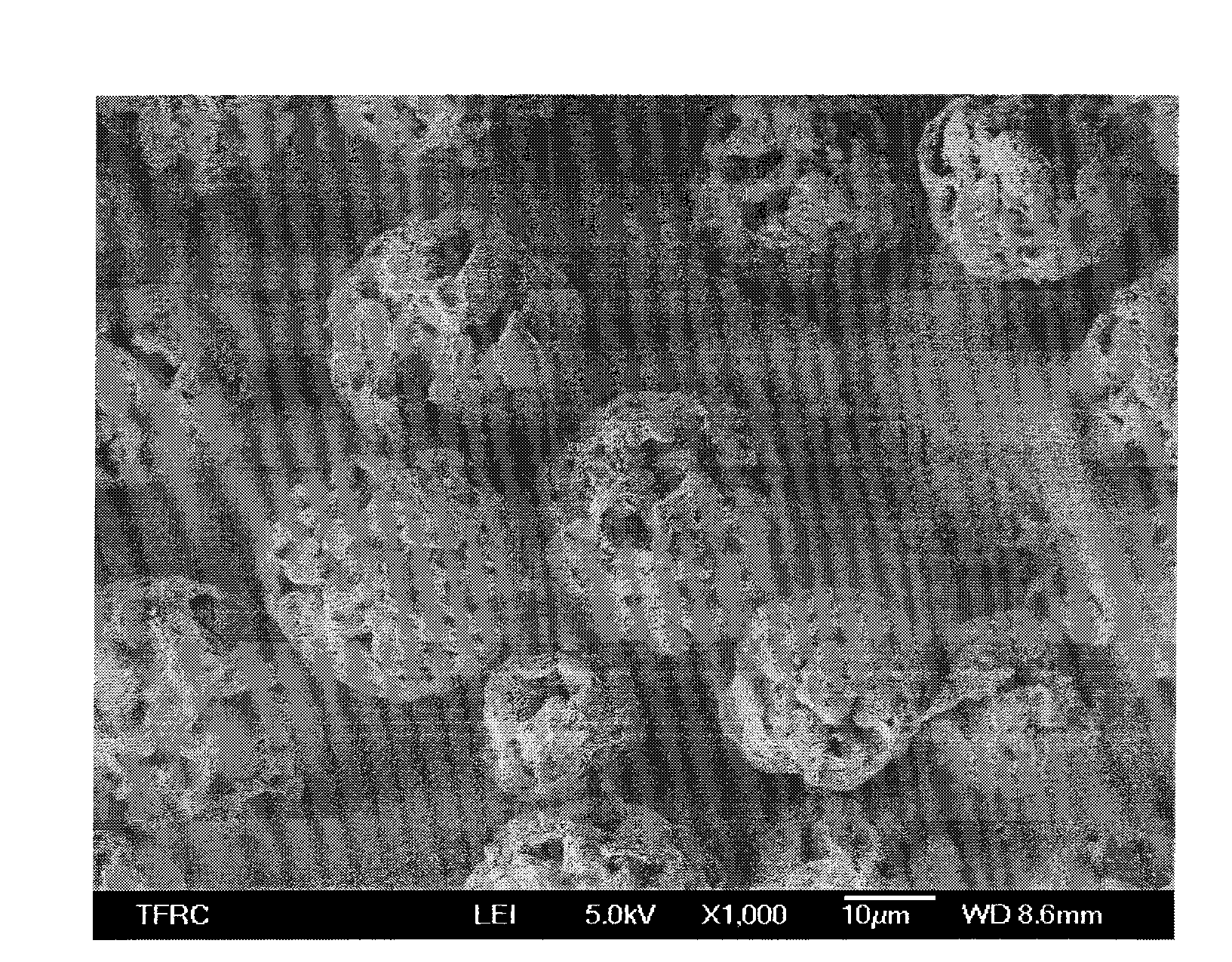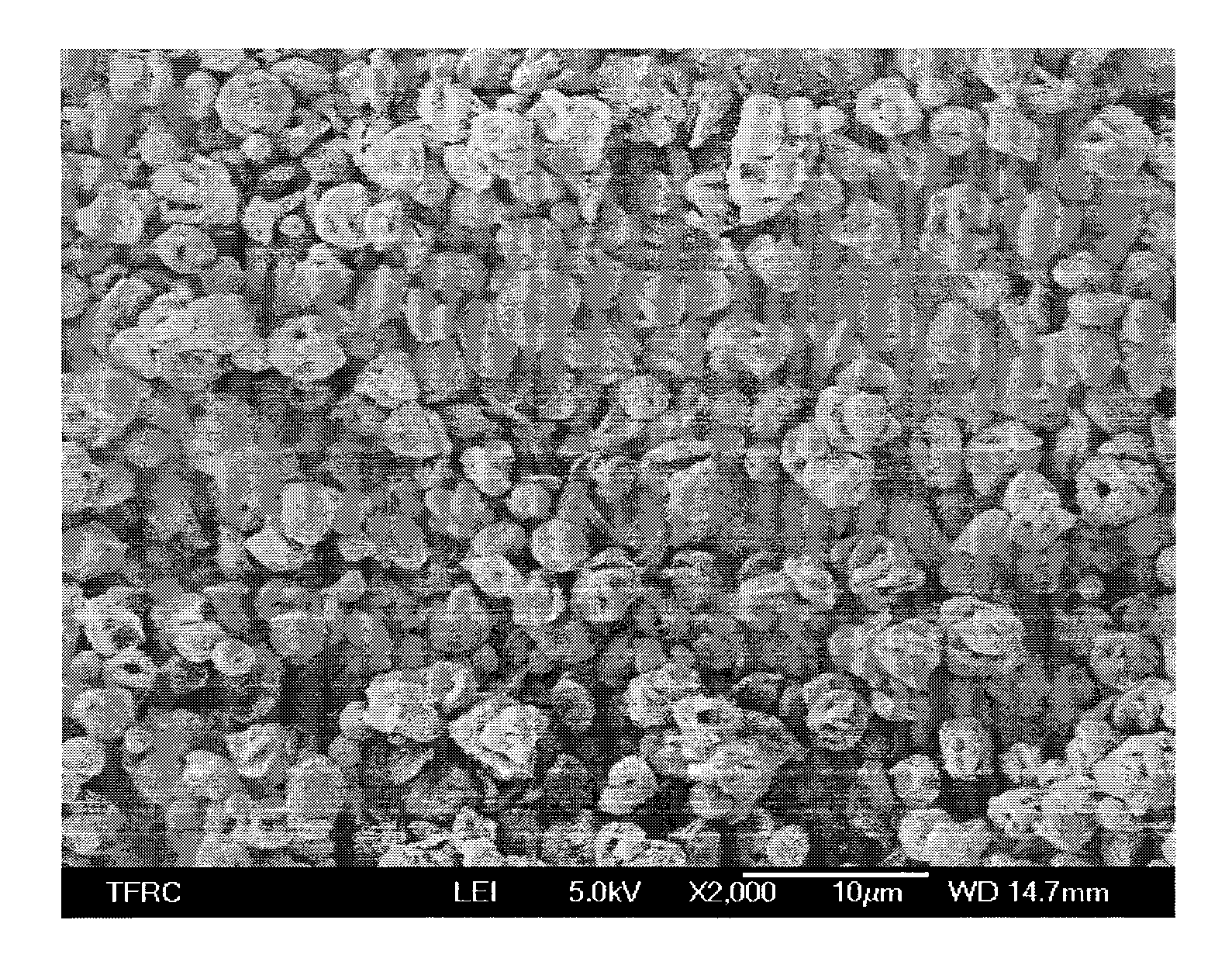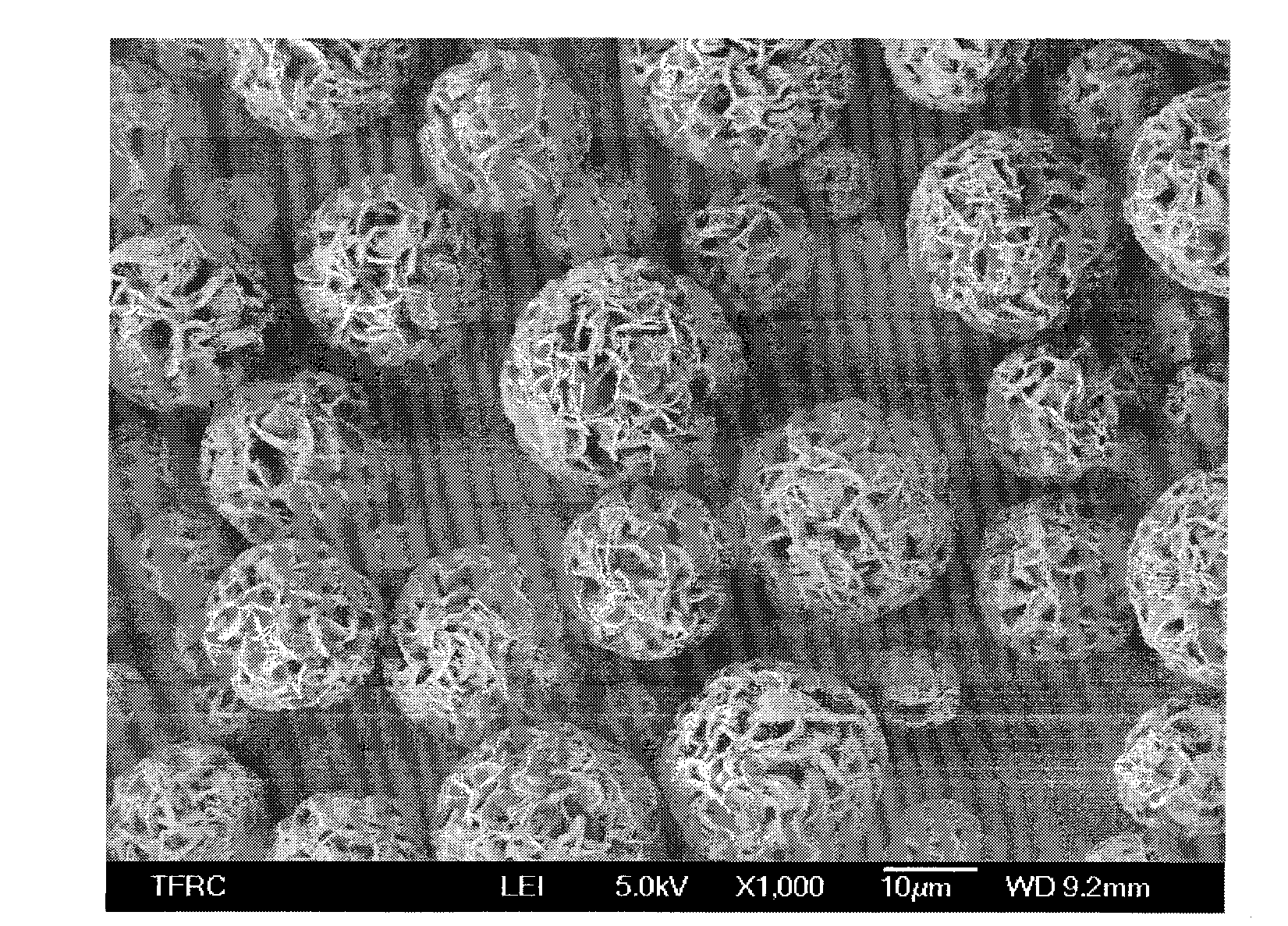Porous polylactic acid particles and preparation method thereof
A technology of polylactic acid microparticles and polylactic acid, which is applied in the field of preparation of porous polylactic acid microparticles, can solve the problems of a large number of porogens, inhomogeneity, and complicated preparation process, and achieve easy industrial operation, effective utilization, and simple operation process Effect
- Summary
- Abstract
- Description
- Claims
- Application Information
AI Technical Summary
Problems solved by technology
Method used
Image
Examples
Embodiment 1
[0053] In the there-necked flask of 250ml, add 1.25g polylactic acid (D lactic acid mass content 4.25%, model is Ingeo TM Biopolymer 4043D), 1.25g hydroxypropyl cellulose (3~6mPa·s, 2% aqueous solution at 20°C), 22.5g diethylene glycol dimethyl ether (boiling point 162°C, 101.3kPa), heated to 80°C, And stir at a speed of 450rpm until the polymer dissolves. Then 25 g of deionized water was added dropwise to the above system at a rate of 0.42 g / min. After the dropwise addition was completed, the resulting suspension was filtered, washed with 100 g of deionized water, filtered, and the filtered product was vacuum-dried at 45° C. for 12 hours to obtain 1.15 g of white polylactic acid powder. Observation of the obtained powder with a scanning electron microscope showed a spherical porous structure ( figure 1 ), the volume average diameter is 39 μm, the particle size distribution index is 1.4, the porosity is 60%, and the oil absorption is 140mL / 100g.
Embodiment 2
[0055] In a three-necked flask of 250ml, add 0.75g polylactic acid (D lactic acid mass content 4.25%, model is Ingeo TM Biopolymer 4043D), 1.25g hydroxypropyl cellulose (3~6mPa s, 2% aqueous solution at 20°C), 23.0g sulfolane (boiling point 285°C, 101.3kPa), heated to 80°C, and stirred at a speed of 450rpm until the polymer dissolves. Then 25 g of deionized water was added dropwise to the above system at a rate of 0.42 g / min. After the dropwise addition, the resulting suspension was filtered, washed with 100 g of deionized water, filtered, and the filtered product was vacuum-dried at 45° C. for 12 hours to obtain 0.65 g of white polylactic acid powder. Observation of the obtained powder with a scanning electron microscope showed an irregular porous structure ( figure 2 ), the volume average diameter is 3 μm, the particle size distribution index is 1.2, the porosity is 45%, and the oil absorption is 105mL / 100g.
Embodiment 3
[0057] In a three-necked flask of 250ml, add 2.00g polylactic acid (D lactic acid mass content 4.25%, model is Ingeo TM Biopolymer 4043D), 1.25g hydroxypropyl cellulose (3~6mPa·s, 2% aqueous solution at 20°C), 21.75g diethylene glycol dimethyl ether (boiling point 162°C, 101.3kPa), heated to 80°C, And stir at a speed of 450rpm until the polymer dissolves. Then 25 g of deionized water was added dropwise to the above system at a rate of 0.42 g / min. After the dropwise addition was completed, the obtained suspension was filtered, washed with 100 g of deionized water, filtered, and the filtered product was vacuum-dried at 45° C. for 12 hours to obtain 1.85 g of white polylactic acid powder. Observation of the obtained powder with a scanning electron microscope showed a spherical porous structure with an average volume diameter of 82 μm, a particle size distribution index of 1.3, a porosity of 58%, and an oil absorption of 150 mL / 100 g.
PUM
| Property | Measurement | Unit |
|---|---|---|
| Boiling point | aaaaa | aaaaa |
| Volume mean diameter | aaaaa | aaaaa |
| Oil absorption | aaaaa | aaaaa |
Abstract
Description
Claims
Application Information
 Login to View More
Login to View More - R&D
- Intellectual Property
- Life Sciences
- Materials
- Tech Scout
- Unparalleled Data Quality
- Higher Quality Content
- 60% Fewer Hallucinations
Browse by: Latest US Patents, China's latest patents, Technical Efficacy Thesaurus, Application Domain, Technology Topic, Popular Technical Reports.
© 2025 PatSnap. All rights reserved.Legal|Privacy policy|Modern Slavery Act Transparency Statement|Sitemap|About US| Contact US: help@patsnap.com



